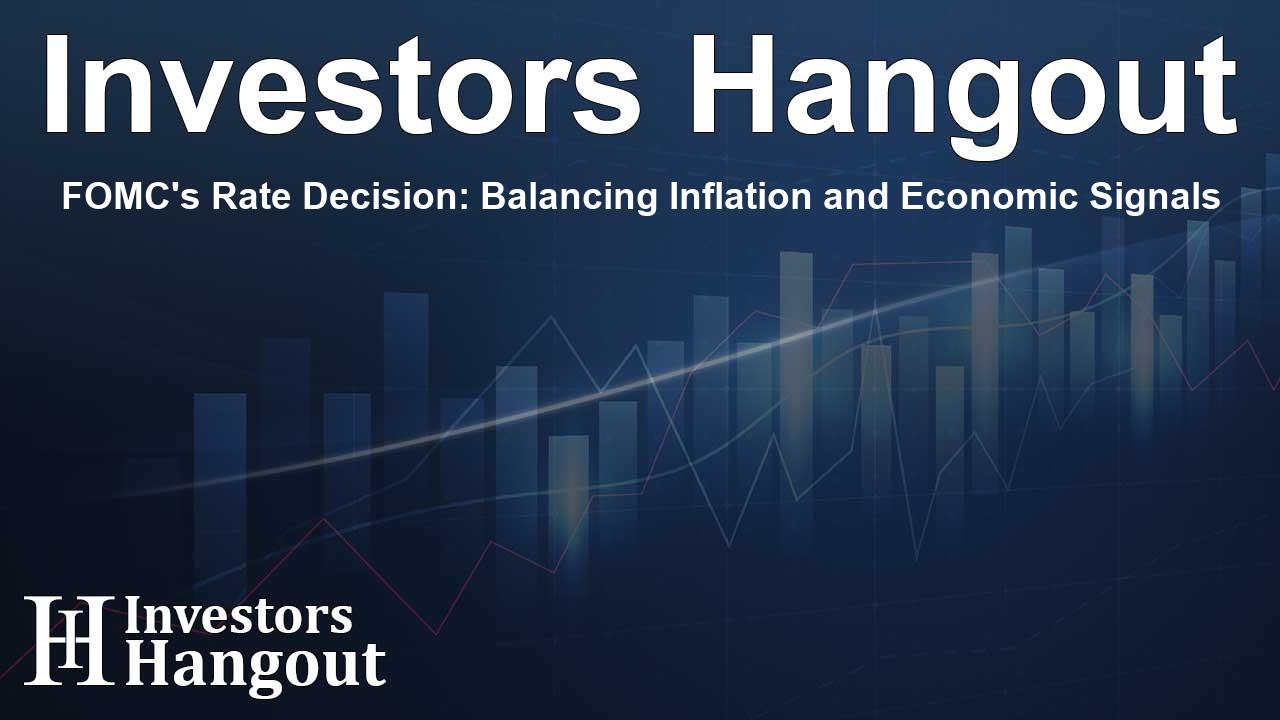FOMC's Rate Decision: Balancing Inflation and Economic Signals

Understanding the Upcoming FOMC Meeting and Interest Rates
The Federal Open Market Committee (FOMC) is set to convene soon, and the general consensus among economists is that no adjustments will be made to the federal funds rate. Currently, this rate has been held steady in the 4.25% to 4.50% range since the previous year. Anticipation is building as the CME FedWatch tool suggests that the likelihood of a rate decrease is exceedingly low.
As of late, an impressive 96.9% of interest rate traders believe the FOMC will maintain its course during the upcoming meeting. This figure marks a significant increase from just over a month ago, when only 81.4% shared the same expectation.
Economic indicators have contributed to this shift in sentiment. Inflation, gauged by the Consumer Price Index (CPI), has been on the rise, reaching 2.7% recently after a low of 2.3%. Meanwhile, the Fed's preferred measure, the Personal Consumption Expenditures (PCE) inflation rate, has also shown an upward trend.
"With the current inflation statistics not yielding encouraging results, we are unlikely to see changes in the rate anytime soon, which feels overly optimistic," stated a chief strategy officer at a well-known financial group.
The upcoming PCE inflation report will be released just after the FOMC's meeting, but it's expected that committee members will already have a good understanding of the inflation trends when they make their decisions, highlighting the intricacies of economic management.
Growing Calls for Action: Rate Cuts on the Horizon?
Recently, there have been notable voices within the FOMC advocating for a reduction in rates. Among them is FOMC member Michelle Bowman, who expressed her willingness to support a rate cut if inflation pressures remain subdued.
"As we consider future pathways, it's crucial to reassess the policy rate. Given the recent downtrend in inflation, we seem to be on a sustainable path towards our target," Bowman commented.
Moreover, FOMC member Christopher Waller delivered a compelling speech titled "The Case for Cutting Now," where he strongly argued for a 25 basis point reduction.
"I am here to articulate the rationale behind adjusting our policy rate next meeting," Waller emphasized.
His rationale centers around the temporary nature of tariff-induced inflation increases and the need for the Fed's monetary policy to stabilize and support labor market growth amidst rising concerns about economic downturns.
Speculation indicates that Waller may register a dissenting vote in the committee's decision, which would be a rarity and noteworthy given the usual consensus.
Economic Indicators to Watch: Jobs Reports and GDP Growth
This week will also bring critical insights from the jobs market, beginning with the ADP Jobs Report. Recent stats showed a surprising downturn, with the private sector losing jobs, and analysts expect the federal unemployment rate to rise slightly.
On top of this, the U.S. Bureau of Economic Analysis will unveil the second-quarter GDP figures. Following a negative GDP in the previous quarter, experts predict a growth rebound to around 2.3%. This anticipated growth rate will be closely scrutinized for signs of stagflation, a troubling combination of rising inflation, increasing unemployment, and stagnating growth.
The Fed's cautious stance reflects these economic complexities, further articulated by Tsepaev's point about the need for thoughtful management of the dollar, especially given its status as the world’s reserve currency.
"It's essential to weigh all actions carefully and not simply react to market pressures," Tsepaev added.
Frequently Asked Questions
What is the FOMC's stance on interest rates currently?
The FOMC is expected to maintain the federal funds rate without any changes in their upcoming meeting.
Why is inflation a significant concern for the FOMC?
Rising inflation affects consumer purchasing power and can complicate monetary policy decisions, influencing the rate setting by the FOMC.
What are the implications of a potential dissent within the FOMC?
A dissenting vote is rare and indicates differing opinions within the committee, which can reflect broader economic concerns.
How can the ADP Jobs Report impact the FOMC decisions?
The ADP Jobs Report provides insights into employment trends; significant job losses could influence the FOMC’s approach to rate adjustments.
What does GDP growth indicate about the economy?
GDP growth is a primary indicator of economic health; positive growth suggests a strengthening economy, while negative growth can indicate a recession.
About The Author
Contact Logan Wright privately here. Or send an email with ATTN: Logan Wright as the subject to contact@investorshangout.com.
About Investors Hangout
Investors Hangout is a leading online stock forum for financial discussion and learning, offering a wide range of free tools and resources. It draws in traders of all levels, who exchange market knowledge, investigate trading tactics, and keep an eye on industry developments in real time. Featuring financial articles, stock message boards, quotes, charts, company profiles, and live news updates. Through cooperative learning and a wealth of informational resources, it helps users from novices creating their first portfolios to experts honing their techniques. Join Investors Hangout today: https://investorshangout.com/
The content of this article is based on factual, publicly available information and does not represent legal, financial, or investment advice. Investors Hangout does not offer financial advice, and the author is not a licensed financial advisor. Consult a qualified advisor before making any financial or investment decisions based on this article. This article should not be considered advice to purchase, sell, or hold any securities or other investments. If any of the material provided here is inaccurate, please contact us for corrections.
